PHYS151: General Physics I Sectional Test I - Summer 1 2018
VerifiedAdded on 2023/06/03
|5
|804
|249
Homework Assignment
AI Summary
This document presents the complete solutions for the PHYS151 General Physics I Sectional Test I, administered during the Summer 1, 2018 session. The test is divided into two sections: Section A consists of fill-in-the-blank questions designed to assess the student's understanding of fundamental physics concepts such as collinear vectors, base units, scalar quantities, and vector diagrams. Section B provides detailed solutions to problem-solving questions, including the identification of correct kinematic equations, dimensional analysis of a given formula, unit conversions, and calculations involving vector forces and their resultant magnitudes and directions. The solutions demonstrate step-by-step approaches, utilizing relevant formulas and principles to arrive at the correct answers for each problem, including force vector components and resultant calculations.
1 out of 5
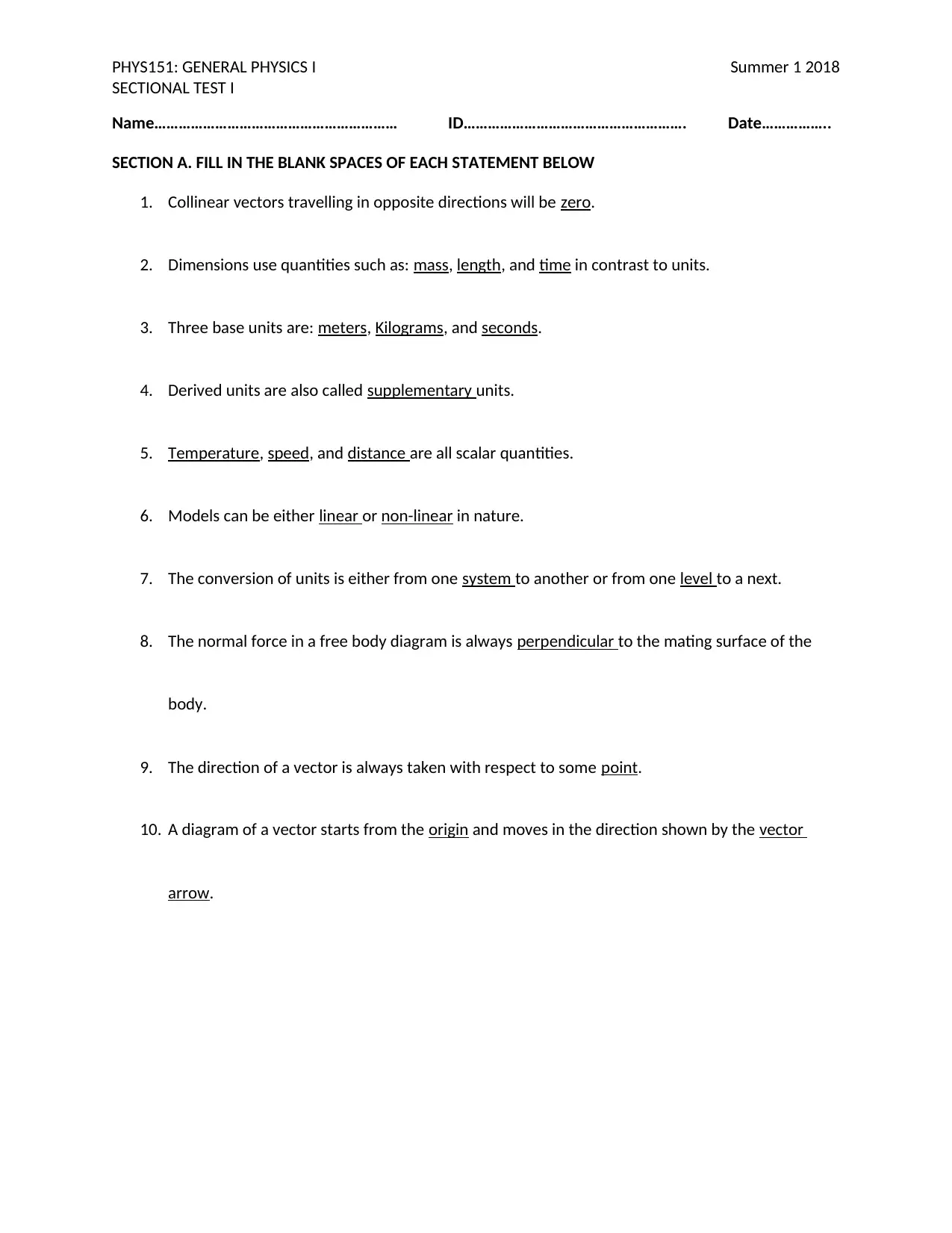
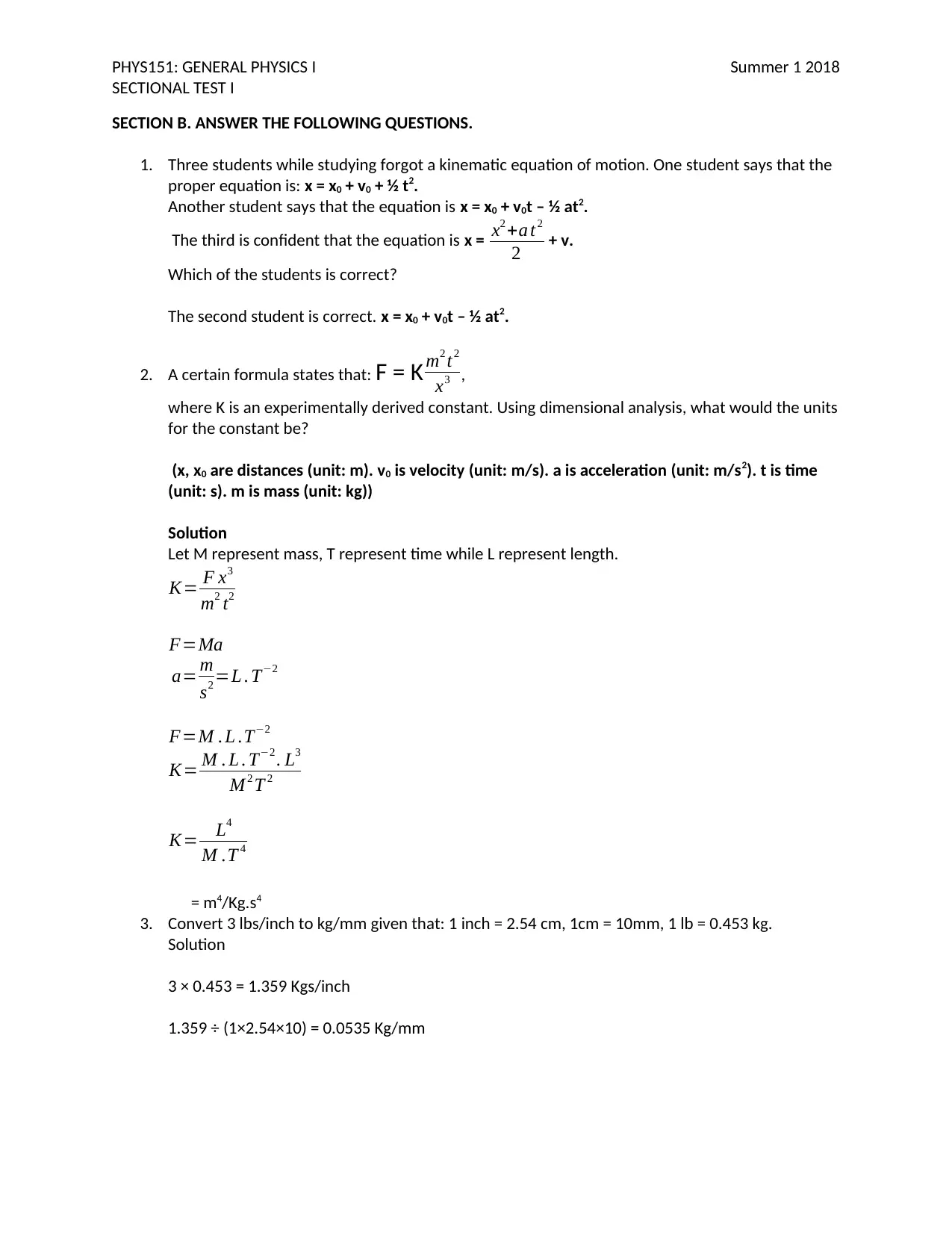
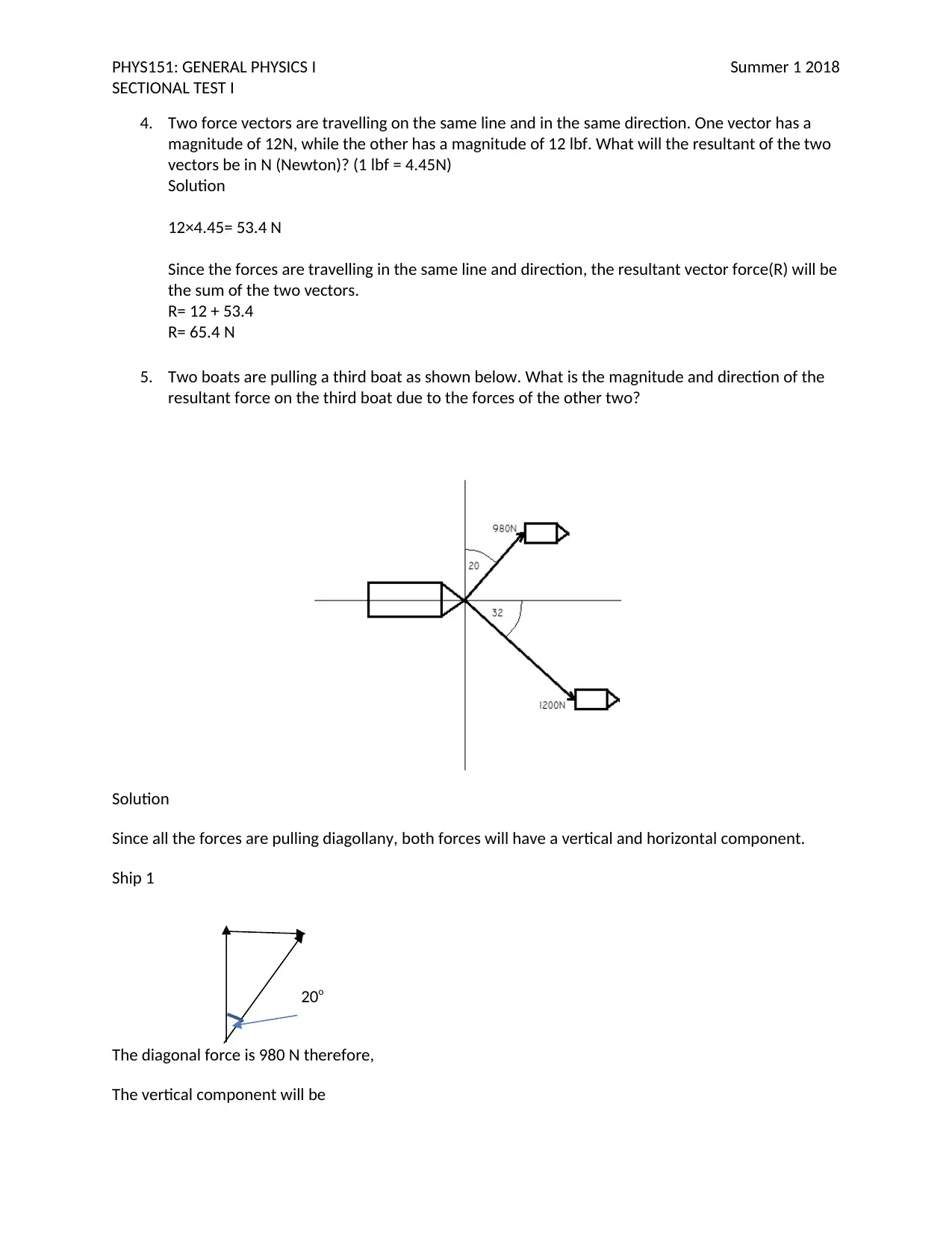

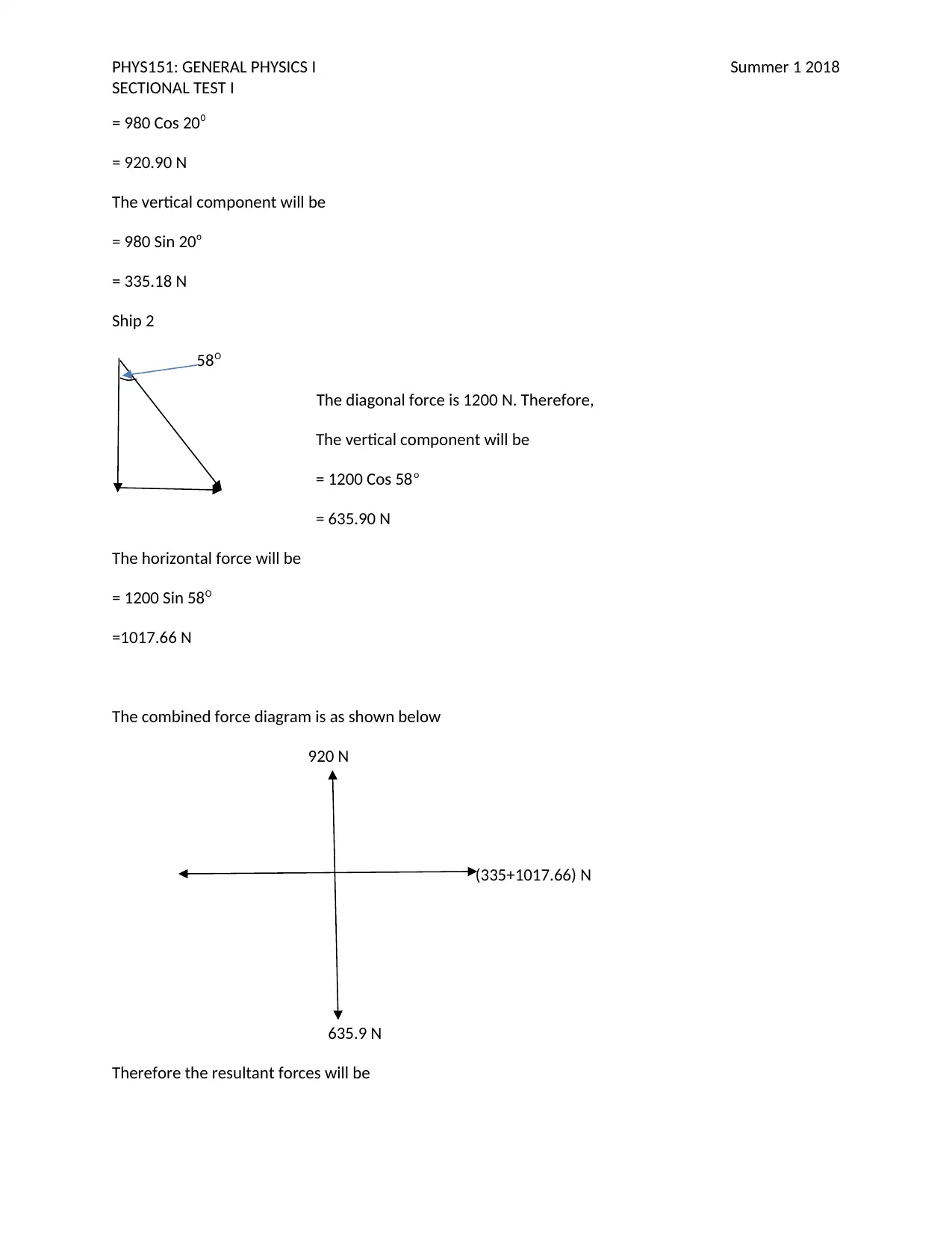
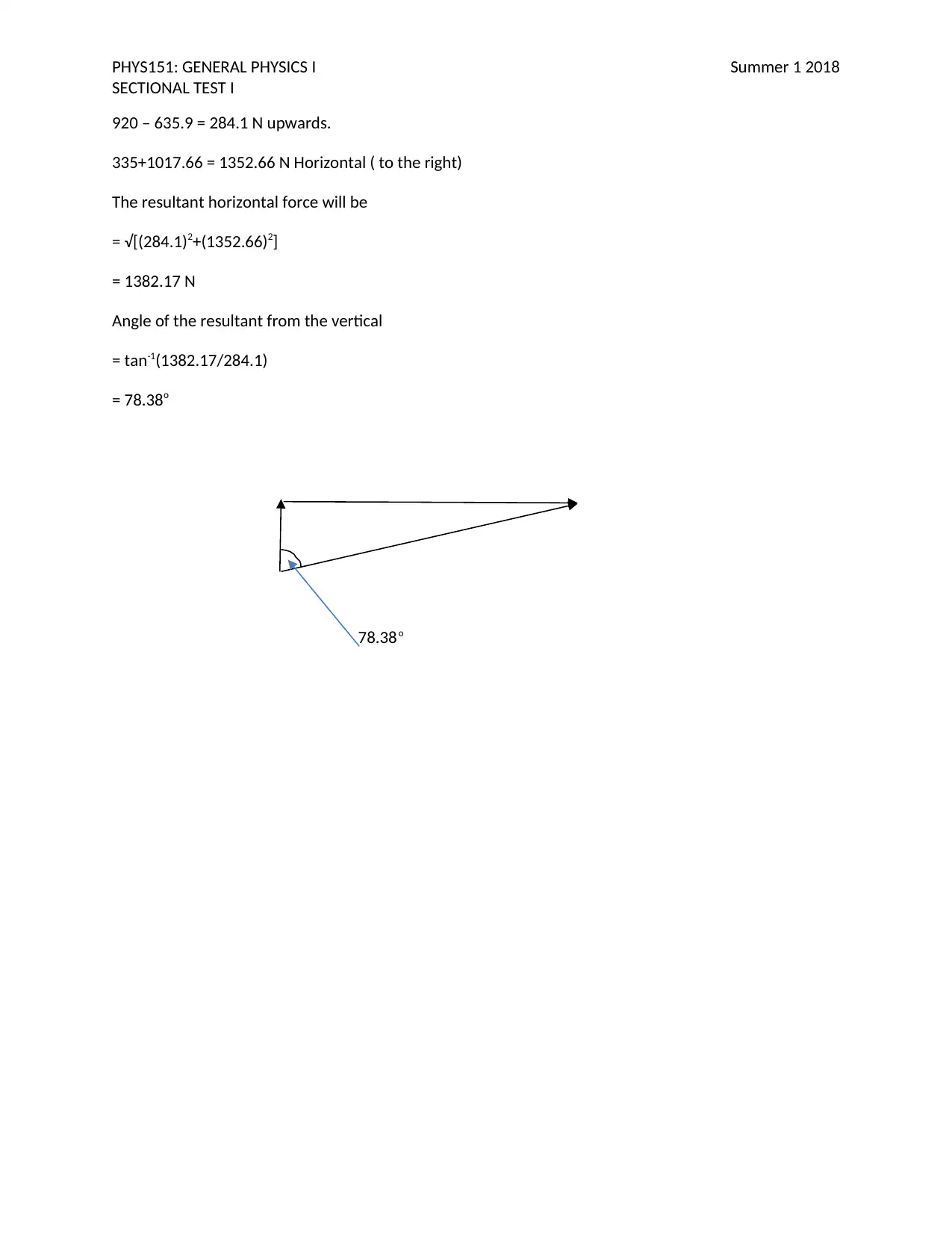



![[object Object]](/_next/static/media/star-bottom.7253800d.svg)